Historical "Truths" That Are Actually Myths
So glad I wasted so much time with history classes in school...
- List View
- Player View
- Grid View
Advertisement
-
1.
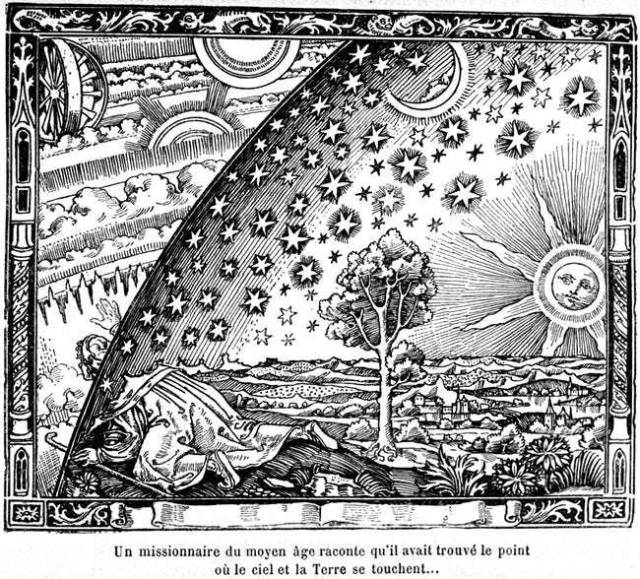 Medieval People Believed the Earth Was Flat. Lots of people believe Christopher Columbus was the first person in the history of everything to seriously believe – to the point of foolhardy recklessness! – that the earth was round, as opposed to flat. In fact, the theory of a globe-shaped Earth had been kicking around for many hundreds of years, dating all the way back to the 4th Century B.C. Although the majority of educated people in 1492 (not just in Europe, but indeed, all over the world) believed the earth was a sphere, Columbus himself, ironically, didn't believe this – he thought the earth was pear-shaped. Go figure.
Medieval People Believed the Earth Was Flat. Lots of people believe Christopher Columbus was the first person in the history of everything to seriously believe – to the point of foolhardy recklessness! – that the earth was round, as opposed to flat. In fact, the theory of a globe-shaped Earth had been kicking around for many hundreds of years, dating all the way back to the 4th Century B.C. Although the majority of educated people in 1492 (not just in Europe, but indeed, all over the world) believed the earth was a sphere, Columbus himself, ironically, didn't believe this – he thought the earth was pear-shaped. Go figure. -
2.
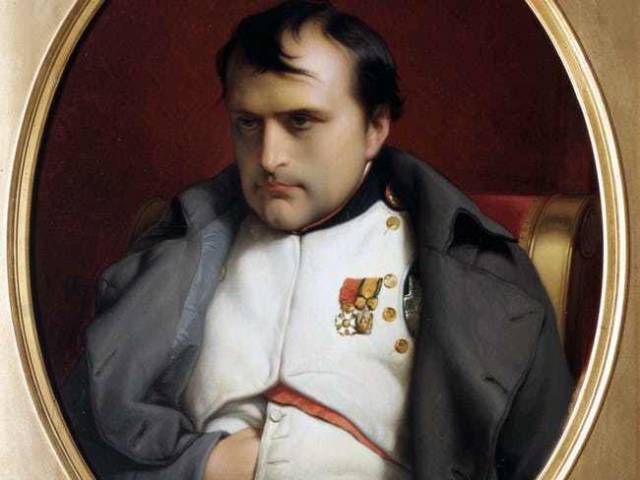 Napoleon Bonaparte Was Inordinately Short. Napoleon Bonaparte was known during his life as "The Little Corporal." While many people erroneously assume this was a reference to his physical height, it actually began early in his career as a mocking reference to his lack of military accolades and low rank. Napoleon Bonaparte was 5'7" – not a towering giant, but certainly not a dwarf.
Napoleon Bonaparte Was Inordinately Short. Napoleon Bonaparte was known during his life as "The Little Corporal." While many people erroneously assume this was a reference to his physical height, it actually began early in his career as a mocking reference to his lack of military accolades and low rank. Napoleon Bonaparte was 5'7" – not a towering giant, but certainly not a dwarf. -
3.
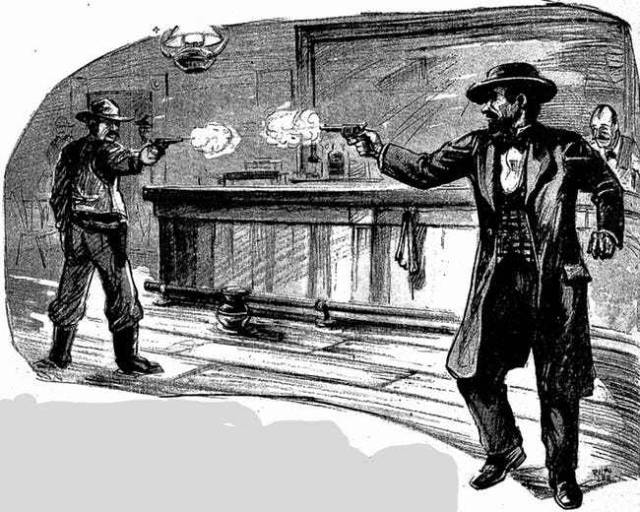 Gun Fights in the American West. Needless to say, this popular misconception mostly comes from the film industry. Western movies and paperbacks were once among the most revered genres of all time (in Europe, strangely, as well as the United States), and have only recently begun to wane in popularity. Though notorious outlaws of the era are often described with gusto as ruthless murderers responsible for hundreds of kills, actual gunfights in the early American West were extremely rare, and were certainly not taken lightly by either citizens or law enforcement. Outlaw gunfighter stories were popular, though, because they were exciting, scary, and glamorous, and the appropriation of them decades later by popular writers and the burgeoning film industry only added to their endurance.
Gun Fights in the American West. Needless to say, this popular misconception mostly comes from the film industry. Western movies and paperbacks were once among the most revered genres of all time (in Europe, strangely, as well as the United States), and have only recently begun to wane in popularity. Though notorious outlaws of the era are often described with gusto as ruthless murderers responsible for hundreds of kills, actual gunfights in the early American West were extremely rare, and were certainly not taken lightly by either citizens or law enforcement. Outlaw gunfighter stories were popular, though, because they were exciting, scary, and glamorous, and the appropriation of them decades later by popular writers and the burgeoning film industry only added to their endurance. -
4.
 The Original War of the Worlds Broadcast. People love this one because it makes them feel smug about how much more sophisticated and media-savvy everyone is now than they used to be 80 years ago. Basically, in 1938, Orson Welles had the brilliant idea of creating a radio drama (this was before television, so radio dramas were popular back then) disguised as a fake news broadcast, where the newscasters would start gradually reporting more and more details of what turns out to be an alien invasion. Popular legend claims Middle America was totally unprepared for this groundbreaking storytelling device, and assumed the broadcast was real – arming themselves with shotguns and taking to the streets in fear. In reality, although some people did get confused or upset by the broadcast, the actual response was greatly exaggerated in the coming weeks by news media eager to cash in on the novelty of the story and make radio (a relatively new technology that many people were still suspicious of) seem irresponsible and dangerous.
The Original War of the Worlds Broadcast. People love this one because it makes them feel smug about how much more sophisticated and media-savvy everyone is now than they used to be 80 years ago. Basically, in 1938, Orson Welles had the brilliant idea of creating a radio drama (this was before television, so radio dramas were popular back then) disguised as a fake news broadcast, where the newscasters would start gradually reporting more and more details of what turns out to be an alien invasion. Popular legend claims Middle America was totally unprepared for this groundbreaking storytelling device, and assumed the broadcast was real – arming themselves with shotguns and taking to the streets in fear. In reality, although some people did get confused or upset by the broadcast, the actual response was greatly exaggerated in the coming weeks by news media eager to cash in on the novelty of the story and make radio (a relatively new technology that many people were still suspicious of) seem irresponsible and dangerous. -
5.
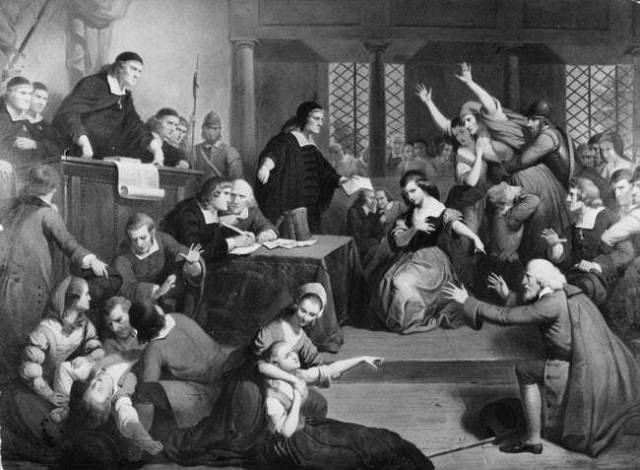 Witches Were Burned At the Stake in Salem. There's some evidence suggesting that people accused of Witchcraft in Europe during the Middle Ages were occasionally burned to death as punishment, but this was never the case in America during the late 17th century. The Salem Village Witch panic was definitely real, but although accused witches were killed in a number of creative ways (including being tied up and thrown in the river, and being crushed to death by rocks), none of the techniques used involved fire. The most common method of executing people convicted of Witchcraft in Puritan New England was hanging.
Witches Were Burned At the Stake in Salem. There's some evidence suggesting that people accused of Witchcraft in Europe during the Middle Ages were occasionally burned to death as punishment, but this was never the case in America during the late 17th century. The Salem Village Witch panic was definitely real, but although accused witches were killed in a number of creative ways (including being tied up and thrown in the river, and being crushed to death by rocks), none of the techniques used involved fire. The most common method of executing people convicted of Witchcraft in Puritan New England was hanging. -
6.
 Gandhi's Liberation of India. Gandhi is viewed by many as the singlehanded instigator of non-violent protests in India, which ultimately led to the country's liberation from British colonization. Actually, though, Gandhi's activities were just one small part of a much larger organized movement in India to overcome British rule. Most historical scholars agree that India's eventual independence would have been inevitable, with or without Gandhi – he was just a bit more of a media darling than some of the nation's other key figures.
Gandhi's Liberation of India. Gandhi is viewed by many as the singlehanded instigator of non-violent protests in India, which ultimately led to the country's liberation from British colonization. Actually, though, Gandhi's activities were just one small part of a much larger organized movement in India to overcome British rule. Most historical scholars agree that India's eventual independence would have been inevitable, with or without Gandhi – he was just a bit more of a media darling than some of the nation's other key figures. -
7.
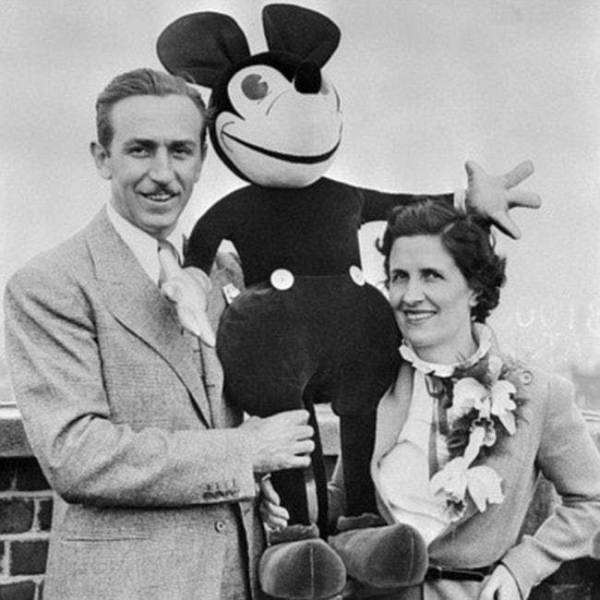 Walt Disney Invented Mickey Mouse. Actually, it was Ub Iwerks, one of Disney's most prolific and talented animators, who invented Mickey. There's an apocryphal story about Disney doodling an original sketch of proto-Mickey character Oswald Rabbit on an envelope while riding on a train (supposedly, this is also how Lincoln came up with the Gettysburg Address – we're skeptical about that one, too) but this hasn't been verified.
Walt Disney Invented Mickey Mouse. Actually, it was Ub Iwerks, one of Disney's most prolific and talented animators, who invented Mickey. There's an apocryphal story about Disney doodling an original sketch of proto-Mickey character Oswald Rabbit on an envelope while riding on a train (supposedly, this is also how Lincoln came up with the Gettysburg Address – we're skeptical about that one, too) but this hasn't been verified. -
8.
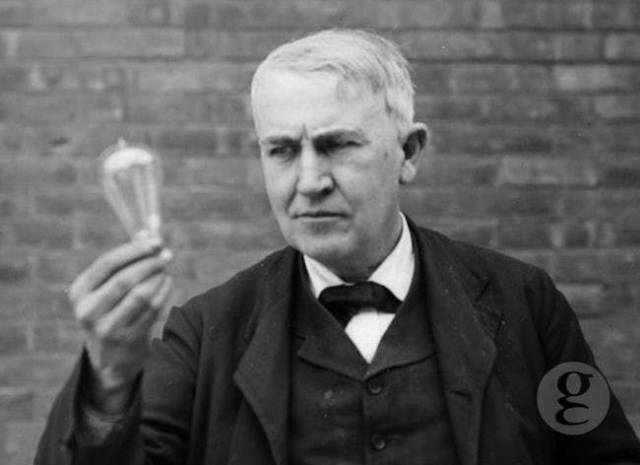 Thomas Edison Invented the Lightbulb. Edison helped to perfect the lightbulb, but he wasn't the first person who ever came up with the idea. Other people had essentially created lightbulbs that worked the same way, but nobody else had been able to create a filament that lasted for longer than an hour or two before burning out. Even the final version he ultimately patented probably wasn't his invention alone – he ran a big laboratory staffed by scores of technicians. Though Edison ended up getting most of the credit, the filament-perfecter was likely one (or a couple) of his paid employees, not Edison himself.
Thomas Edison Invented the Lightbulb. Edison helped to perfect the lightbulb, but he wasn't the first person who ever came up with the idea. Other people had essentially created lightbulbs that worked the same way, but nobody else had been able to create a filament that lasted for longer than an hour or two before burning out. Even the final version he ultimately patented probably wasn't his invention alone – he ran a big laboratory staffed by scores of technicians. Though Edison ended up getting most of the credit, the filament-perfecter was likely one (or a couple) of his paid employees, not Edison himself. -
9.
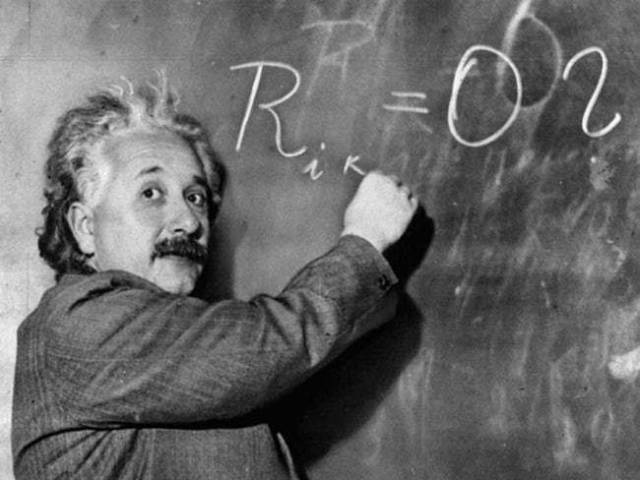 Einstein Flunked Out of Math. Einstein did once fail an entrance exam to a technical college, after being heavily pressured by his working class father to apply there rather than pursue a higher education. He did not, however, persistently flunk out of math or science courses during his regular schooling.
Einstein Flunked Out of Math. Einstein did once fail an entrance exam to a technical college, after being heavily pressured by his working class father to apply there rather than pursue a higher education. He did not, however, persistently flunk out of math or science courses during his regular schooling. -
10.
 Medieval Torture Devices. Torture wasn't exactly unheard of during the Middle Ages, but a lot of the specific torture devices that were supposedly used during that period have been made up by future generations wanting to cash in on their titillation factor. The most common of these is the Iron Maiden, which was originally pieced together for display in a British museum during the 18th century. (Museums were weird and fascinating things back then, existing more for "entertainment" than for actual education, and often contained an equal mix of natural and historical artifacts, and blatant frauds or "curiosities.") Iron Maidens do exist... they just probably weren't ever used to actually torture anyone.
Medieval Torture Devices. Torture wasn't exactly unheard of during the Middle Ages, but a lot of the specific torture devices that were supposedly used during that period have been made up by future generations wanting to cash in on their titillation factor. The most common of these is the Iron Maiden, which was originally pieced together for display in a British museum during the 18th century. (Museums were weird and fascinating things back then, existing more for "entertainment" than for actual education, and often contained an equal mix of natural and historical artifacts, and blatant frauds or "curiosities.") Iron Maidens do exist... they just probably weren't ever used to actually torture anyone. -
11.
 Let Them Eat Cake. Marie Antoinette's famous statement is actually attributable to an anecdote in Rousseau's autobiographical Confessions, which appeared twenty years before the French Revolution. It wasn't attributed to Marie until many decades later, becoming an iconic symbol of the French nobility's naiveté and indifference to the struggles of the common people.
Let Them Eat Cake. Marie Antoinette's famous statement is actually attributable to an anecdote in Rousseau's autobiographical Confessions, which appeared twenty years before the French Revolution. It wasn't attributed to Marie until many decades later, becoming an iconic symbol of the French nobility's naiveté and indifference to the struggles of the common people. -
12.
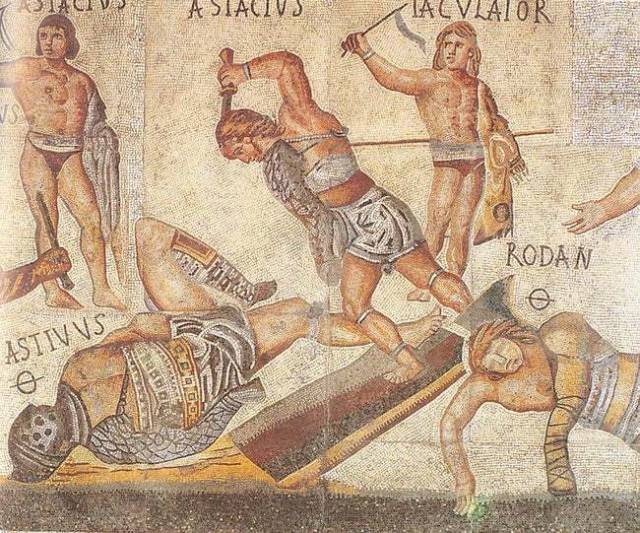 Gladiators. Ancient Roman tastes may have run toward the violent and perverse (and the violently perverse), but the modern concept of Roman gladiators as chattel-like grist for the mill of the Roman entertainment complex is somewhat exaggerated. Successful gladiators were popular with the Roman public, and anthropological records suggest they were most likely treated accordingly, often having long careers and being attended to by trainers and doctors.
Gladiators. Ancient Roman tastes may have run toward the violent and perverse (and the violently perverse), but the modern concept of Roman gladiators as chattel-like grist for the mill of the Roman entertainment complex is somewhat exaggerated. Successful gladiators were popular with the Roman public, and anthropological records suggest they were most likely treated accordingly, often having long careers and being attended to by trainers and doctors. -
13.
 The Death of Catherine the Great. Like most powerful women, Catherine the Great had a lot of haters. She still has a reputation (partially true, and partially sexist confabulation) for politically strategic sexual manipulation. During her life, she was nicknamed "The Scarlet Empress" for her allegedly high volume of sexual partners (probably around 20 throughout the course of her life, which today would pretty much be no big deal). Europe's embittered slut-shaming of Catherine reached its pinnacle following her death, when French intellectuals began circulating the 100% fabricated rumor that she had died while attempting to have sex with a horse. In reality, Catherine died unremarkably in her bed at the age of 67, following a stroke.
The Death of Catherine the Great. Like most powerful women, Catherine the Great had a lot of haters. She still has a reputation (partially true, and partially sexist confabulation) for politically strategic sexual manipulation. During her life, she was nicknamed "The Scarlet Empress" for her allegedly high volume of sexual partners (probably around 20 throughout the course of her life, which today would pretty much be no big deal). Europe's embittered slut-shaming of Catherine reached its pinnacle following her death, when French intellectuals began circulating the 100% fabricated rumor that she had died while attempting to have sex with a horse. In reality, Catherine died unremarkably in her bed at the age of 67, following a stroke. -
14.
 Women's Liberationists Burned Their Bras. Angry, sign-waving, bra-burning feminists have become an archetype of the 1970s. Though this was certainly a time of radical social rebellion and political organization for women, believe it or not, there was never even one documented instance of a woman burning a bra in public. People burned their draft cards to protest the Vietman War, and at least one feminist demonstration involved throwing bras, girdles, and other traditionally feminine accoutrements into a trash can, but the bra-burning Women's Libber was purely an invention of suspicious bourgeois journalists trying to make feminist activists sound silly (and possibly a little sexy).
Women's Liberationists Burned Their Bras. Angry, sign-waving, bra-burning feminists have become an archetype of the 1970s. Though this was certainly a time of radical social rebellion and political organization for women, believe it or not, there was never even one documented instance of a woman burning a bra in public. People burned their draft cards to protest the Vietman War, and at least one feminist demonstration involved throwing bras, girdles, and other traditionally feminine accoutrements into a trash can, but the bra-burning Women's Libber was purely an invention of suspicious bourgeois journalists trying to make feminist activists sound silly (and possibly a little sexy). -
15.
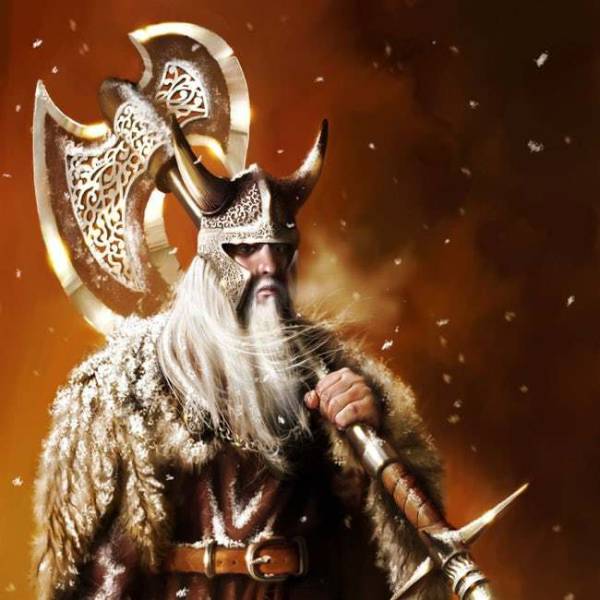 Vikings Wore Helmets With Horns or Wings. Vikings are practically synonymous these days with those goofy horned helmets they supposedly wore, however, it turns out that most actual Vikings probably never wore them. The image of a Viking wearing a horned helmet originally derived from an ancient tapestry that was recovered showing a man wearing a helmet with large bull horns. More recent scholarship has revealed, however, that this figure was probably either enacting a ceremonial ritual, or was meant to be a mythological figure, like a God. The popularity of the horned helmet is traceable to the faddish Norse revival of the 19th century in Western Europe, and particularly to Wagner, whose Norse-inspired operas often featured dramatically costumed Vikings with horned and winged helms.
Vikings Wore Helmets With Horns or Wings. Vikings are practically synonymous these days with those goofy horned helmets they supposedly wore, however, it turns out that most actual Vikings probably never wore them. The image of a Viking wearing a horned helmet originally derived from an ancient tapestry that was recovered showing a man wearing a helmet with large bull horns. More recent scholarship has revealed, however, that this figure was probably either enacting a ceremonial ritual, or was meant to be a mythological figure, like a God. The popularity of the horned helmet is traceable to the faddish Norse revival of the 19th century in Western Europe, and particularly to Wagner, whose Norse-inspired operas often featured dramatically costumed Vikings with horned and winged helms. -
16.
 Van Gogh Cut off his ear. Okay, this one's sort of true, but he didn't cut off the entire ear. Just a large portion of the earlobe. The part where he mailed it vindictively to a prostitute who broke his heart is, unfortunately, accurate.
Van Gogh Cut off his ear. Okay, this one's sort of true, but he didn't cut off the entire ear. Just a large portion of the earlobe. The part where he mailed it vindictively to a prostitute who broke his heart is, unfortunately, accurate. -
17.
 Sir Isaac Newton's Discovery of Gravity. It's true that Newton developed the theory of gravity, but that anecdote about how he had an epiphany after getting hit on the head by an apple that fell from a tree is probably a pile of crap. The first known source for this story comes from the satirist Voltaire (known for being hilarious, but not necessarily for his veracity), and wasn't published until many years after Newton's death.
Sir Isaac Newton's Discovery of Gravity. It's true that Newton developed the theory of gravity, but that anecdote about how he had an epiphany after getting hit on the head by an apple that fell from a tree is probably a pile of crap. The first known source for this story comes from the satirist Voltaire (known for being hilarious, but not necessarily for his veracity), and wasn't published until many years after Newton's death. -
18.
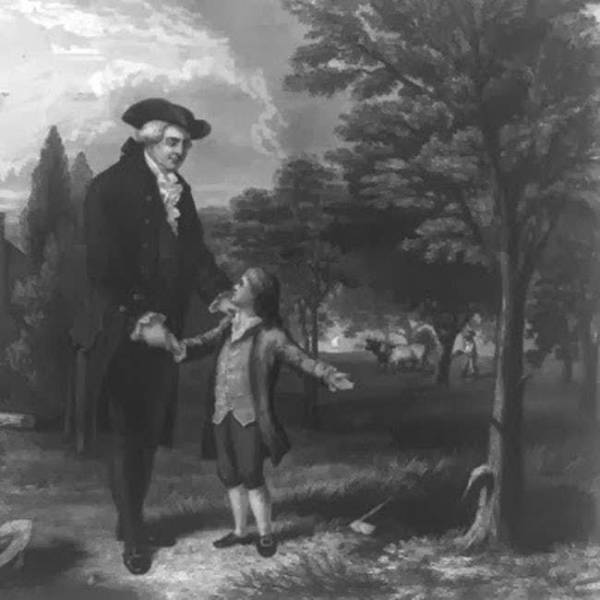 George Washington's Cherry Tree Fiasco. Unsurprisingly, this treacly parable about George Washington's childhood integrity is untrue and was originally drawn from an aggrandizing biography published by Parson Weems in 1809. Supposedly, as a child, Washington overzealously cut down his father's cherry tree with a hatchet, but after confessing to the deed, was forgiven with the admonition that "honestly is more valuable than a thousand trees." This one was pretty much made up from whole cloth as a PR gimmick by Washington's hagiographer, near as we can tell.
George Washington's Cherry Tree Fiasco. Unsurprisingly, this treacly parable about George Washington's childhood integrity is untrue and was originally drawn from an aggrandizing biography published by Parson Weems in 1809. Supposedly, as a child, Washington overzealously cut down his father's cherry tree with a hatchet, but after confessing to the deed, was forgiven with the admonition that "honestly is more valuable than a thousand trees." This one was pretty much made up from whole cloth as a PR gimmick by Washington's hagiographer, near as we can tell. -
19.
 Mussolini Kept The Trains Running on Time. This remains a favorite, morbid joke about the Italian dictator, but although Mussolini's PR team aggressively bragged during his tenure about how punctual the trains had magically become, their service in reality was improved only slightly, and they certainly weren't always on time. (Totalitarian regimes do this sort of thing frequently – who's going to risk their life contradicting a tyrannical dictator over something as silly as train schedules? Nobody, that's who.) Why perceptions about Italy's train system were so important to Mussolini's regime remains unclear, but for habitual users of public transport, we can certainly understand what a Godlike miracle this must have sounded like on paper.
Mussolini Kept The Trains Running on Time. This remains a favorite, morbid joke about the Italian dictator, but although Mussolini's PR team aggressively bragged during his tenure about how punctual the trains had magically become, their service in reality was improved only slightly, and they certainly weren't always on time. (Totalitarian regimes do this sort of thing frequently – who's going to risk their life contradicting a tyrannical dictator over something as silly as train schedules? Nobody, that's who.) Why perceptions about Italy's train system were so important to Mussolini's regime remains unclear, but for habitual users of public transport, we can certainly understand what a Godlike miracle this must have sounded like on paper. -
20.
 Victorians Covered Their Table Legs Out of Modesty. Slightly less popular today, this cherished anecdote about the Victorians actually originated in Britain and was told about Americans. The idea of sophisticated adults feeling concern over impure sexual thoughts inspired by table legs, however, fits in more comfortably today with negative stereotypes about citizens of Victorian England, who were notoriously paranoid about all forms of sexual representation, despite at the same time secretly consuming massive quantities of what is seriously some of the filthiest pornography you have ever seen in your life.
Victorians Covered Their Table Legs Out of Modesty. Slightly less popular today, this cherished anecdote about the Victorians actually originated in Britain and was told about Americans. The idea of sophisticated adults feeling concern over impure sexual thoughts inspired by table legs, however, fits in more comfortably today with negative stereotypes about citizens of Victorian England, who were notoriously paranoid about all forms of sexual representation, despite at the same time secretly consuming massive quantities of what is seriously some of the filthiest pornography you have ever seen in your life. -
21.
 Adolf Hitler Was a Socialist. People love to compare modern socialists to Adolf Hitler and the Nazis, and some even suffer under the delusion that Hitler was an avowed socialist. This is in part, if not entirely, due to the Nazis calling themselves the National Socialist Party. However, the dogma of National Socialism/Nazism has basically nothing to do with socialism. Adolf Hitler was a fascist who used quack science of fiery rhetoric to inflame racist and anti-Semitic sentiment in Germany's economically disenfranchised masses. Fascism is a 20th century political movement that arose in opposition to liberalism, Marxism, and anarchism, and espouses the need for totalitarian rule under a one-party system. This is radically different than socialist beliefs in democracy and public ownership of the means of production.
Adolf Hitler Was a Socialist. People love to compare modern socialists to Adolf Hitler and the Nazis, and some even suffer under the delusion that Hitler was an avowed socialist. This is in part, if not entirely, due to the Nazis calling themselves the National Socialist Party. However, the dogma of National Socialism/Nazism has basically nothing to do with socialism. Adolf Hitler was a fascist who used quack science of fiery rhetoric to inflame racist and anti-Semitic sentiment in Germany's economically disenfranchised masses. Fascism is a 20th century political movement that arose in opposition to liberalism, Marxism, and anarchism, and espouses the need for totalitarian rule under a one-party system. This is radically different than socialist beliefs in democracy and public ownership of the means of production. -
22.
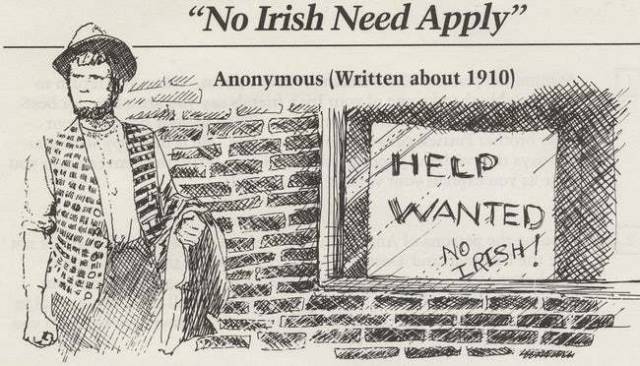 No Irish Need Apply. A favorite caveat of many white people when confronted with historical racism is to blurt, "But the Irish were persecuted, too!" While it's certainly true that many recent Irish immigrants had trouble finding work in the United States during the early 19th century (because they were poor, uneducated, and had extremely silly accents) the degree to which these immigrants were actually discriminated against in America has been hugely exaggerated by history. One of the most iconic representations of Irish persecution in America is the "No Irish Need Apply" sign, which according to popular legend, used to be posted all over the damn place, making it impossible for Irish people to find jobs. Actually, though, there is absolutely no record of signs like this ever being posted by business owners anywhere at any time in the nation's history, except in frat bars during the second half of the 20th century. Seriously. Get over yourself, Irish-Americans.
No Irish Need Apply. A favorite caveat of many white people when confronted with historical racism is to blurt, "But the Irish were persecuted, too!" While it's certainly true that many recent Irish immigrants had trouble finding work in the United States during the early 19th century (because they were poor, uneducated, and had extremely silly accents) the degree to which these immigrants were actually discriminated against in America has been hugely exaggerated by history. One of the most iconic representations of Irish persecution in America is the "No Irish Need Apply" sign, which according to popular legend, used to be posted all over the damn place, making it impossible for Irish people to find jobs. Actually, though, there is absolutely no record of signs like this ever being posted by business owners anywhere at any time in the nation's history, except in frat bars during the second half of the 20th century. Seriously. Get over yourself, Irish-Americans.
- NEXT GALLERY
-

- Chick Shows Why You Should Never Trust Instagram
Medieval People Believed the Earth Was Flat. Lots of people believe Christopher Columbus was the first person in the history of everything to seriously believe – to the point of foolhardy recklessness! – that the earth was round, as opposed to flat. In fact, the theory of a globe-shaped Earth had been kicking around for many hundreds of years, dating all the way back to the 4th Century B.C. Although the majority of educated people in 1492 (not just in Europe, but indeed, all over the world) believed the earth was a sphere, Columbus himself, ironically, didn't believe this – he thought the earth was pear-shaped. Go figure.
22/22
1/22
Categories:
Wtf


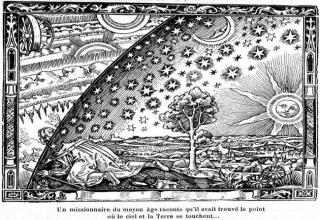






5 Comments